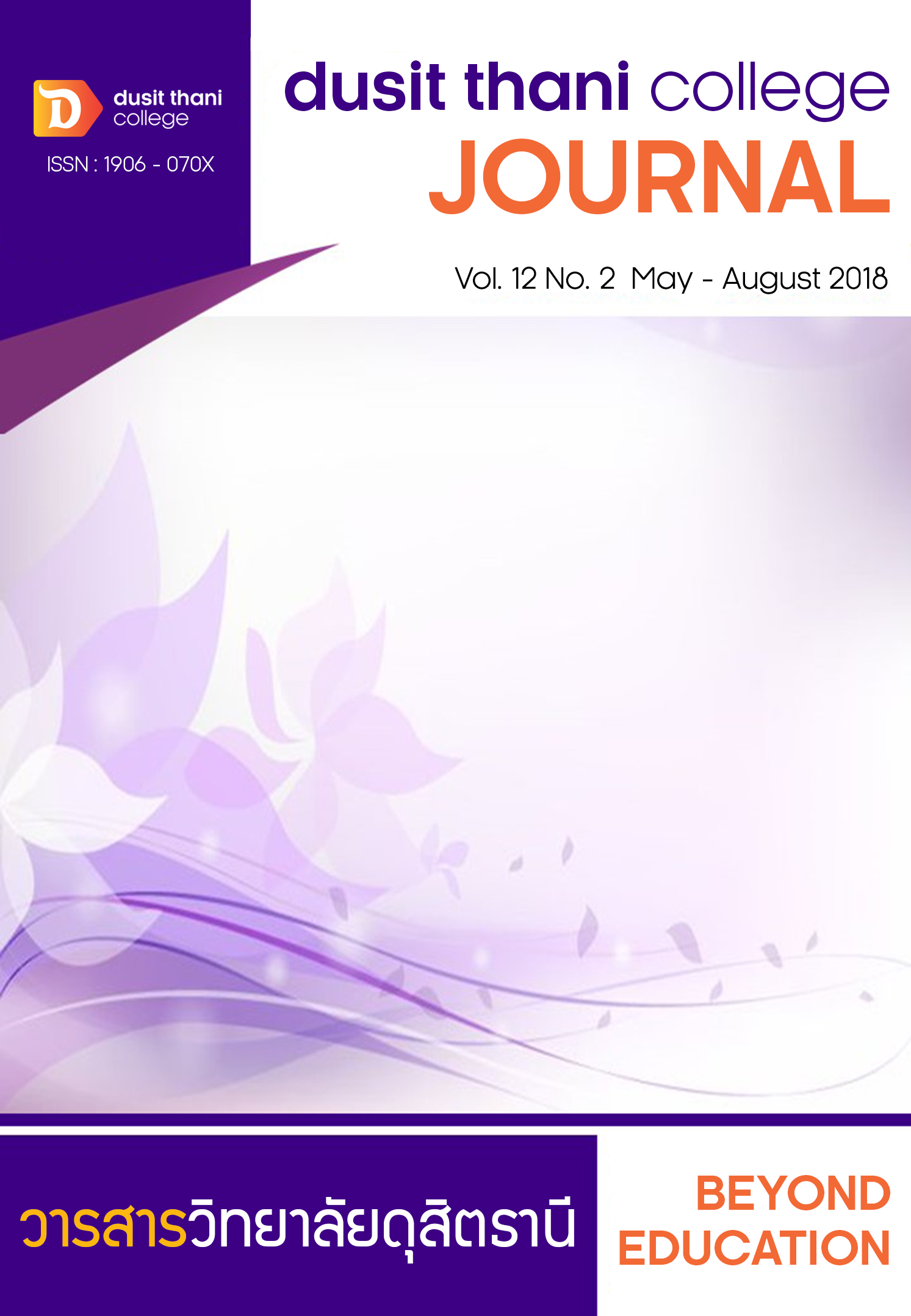Development of Undergraduate Western Dance Curriculum and Instruction in Thailand by Benchmarking Methodology
Main Article Content
Abstract
The purposes of this research were to 1) analyze Western dance curriculum and instruction in Thai higher education institutions and foreign higher education institutions; 2) analyze the current situations and needs of Western dance curriculum and instruction in Thai and foreign higher education institutions; 3) benchmark the Western dance curricula between Thai and foreign higher education institutions; and 4) develop framework of the undergraduate Western dance curriculum and instruction in Thailand towards the international standards. The research was conducted by means of content analysis of Western dance curricula of 4 Thai and 4 foreign higher education institutions. Moreover, the current situations and needs of Western dance instruction were analyzed through the collection of questionnaire from a total number of 212 populations consisting of 12 instructors, 80 Western dance students and 80 graduate’s students and 40 of employers. The curriculum and instruction benchmarking was conducted by using the functional benchmarking between Chulalongkorn University and Victorian College of the Arts. The research findings were as follows:
- Standards of curriculum and instruction of western dance in Thai higher education institutions was based on National Qualifications Framework for Higher Education in Thailand B.E. 2552 (2009) The foreign are focused on Intellectual skills Ethics Higher education institutions focus on practical skills. Knowledge Intellectual skills Course Structure There are differences in the number of credits. Higher Education Institutions Credits required to study are credit or grades. The content of Thai higher education institutions focuses on knowledge. Creativity Cultural conservation Higher education institutions focus on knowledge, creativity and innovation in work creation.
- The overall situations and needs of curriculum development of Western Dance focused on 5 aspects: 1) learning environment 2) cultural conservation and creation, 3) instruction development, 4) learning performance, and 5) philosophy, needs and objectives of curriculum.
- According to the benchmark results between Chulalongkorn University and Victorian College of the Arts: 1) the instructional development: higher proportion of practicum than theoretical session, community-based professional experience, curriculum integrated with the art and music practicum; 2) the learning environment: sufficient number of laboratories in dance theaters equipped, off-hour services, scholarship; 3) the philosophy, significance and objectives of curriculum: curriculum integrated with community development projects and effective communication; 4) cultural conservation and creativity: availability of dances for the communities; 5) the learning outcomes: teaching experience training.
- The results of the research go to the framework for the development of the bachelor degree, Bachelor of Arts Program Western Dance Courses.
Article Details
Article Screening Policy
- All research and academic articles to be published must be considered and screened by three peer reviews in the relevant field / article.
- All articles, texts, illustrations and tables published in the journal are the personal opinions of the authors. Editors don't always have to agree. And no responsibility whatsoever is the sole responsibility of the author.
- The articles to be published must never be published. Where did you first publish? And not in the consideration of other journals If the audit found that there has been a duplicate publication It is the sole responsibility of the author.
- Any article that the reader sees as being plagiarized or impersonated without reference. Or mislead the work of the author Please let the journal editor know it will be your greatest blessing.
References
Kitti Kittisup. (2003). An activity-based collaborative benchmarking model: A case study of the teaching and learning management of the electrical engineering program among military academies under the jurisdiction of ministry of defense. Department of Higher Education, Faculty of Education, Chulalongkorn University
Manus Mongkolsuk. (2011). Accession to the ASEAN Community in 2015. Summary of Academic Seminar.
Milton H. Snoeyenbos and Carole A. Knapp. (1979). Dance Theory and Dance
Education.University of Illinois Press. Journal of Aesthetic Education, Vol.13 No.3 (Jul., 1979), pp. 17 - 30.
Ministry of Education. (2003). National Education Act B.E. 2542 (1999) and Amendments (Second Edition) B.E. 2545 (2002). Bangkok: Printing House of the Express Transportation Organization of Thailand.
Pitoon sinlarat. (2003). Courses offered Higher education Development in 200 years. Center for Textbooks and Academic Documents, Faculty of Education, Chulalongkorn University.
Sakol Pungamdee. (2002). Art for Communication. Bangkok: VardSilk Publishing.
Tissana Khamanee. (2008). Knowledge to All. Bangkok: Bangkok: Publishers of Chulalongkorn University.


